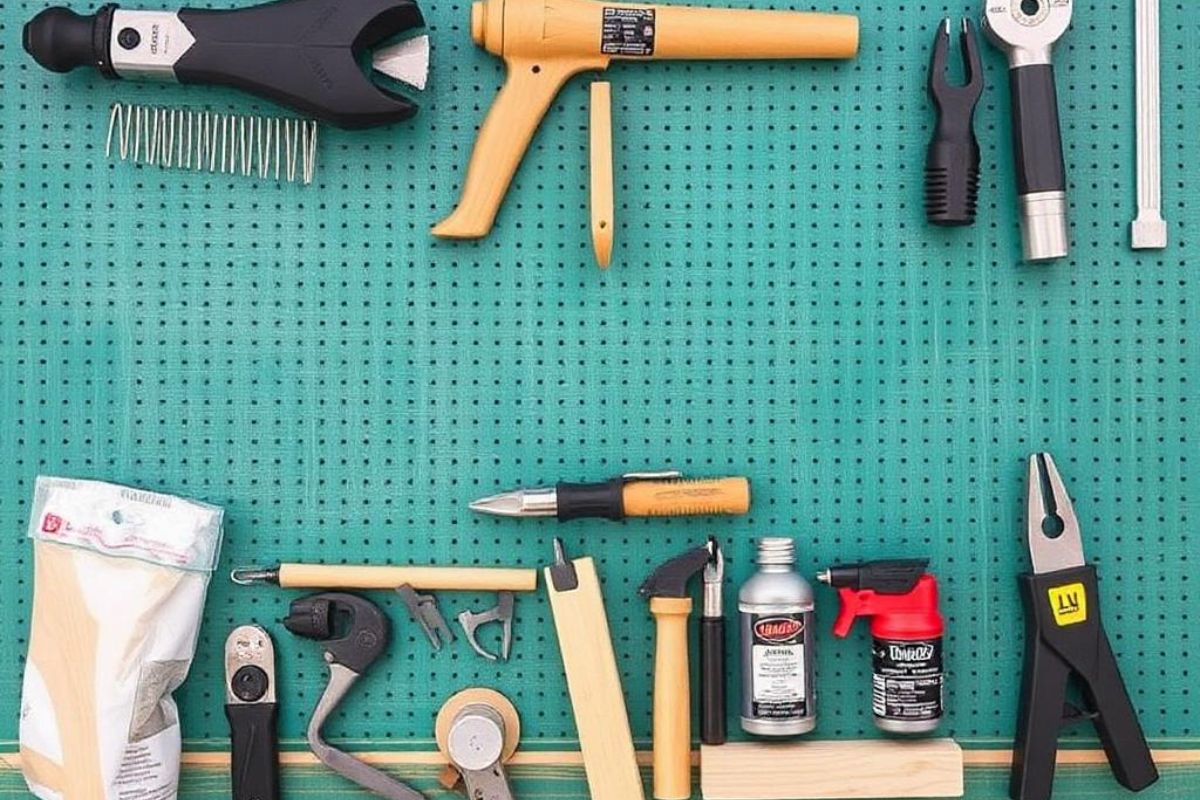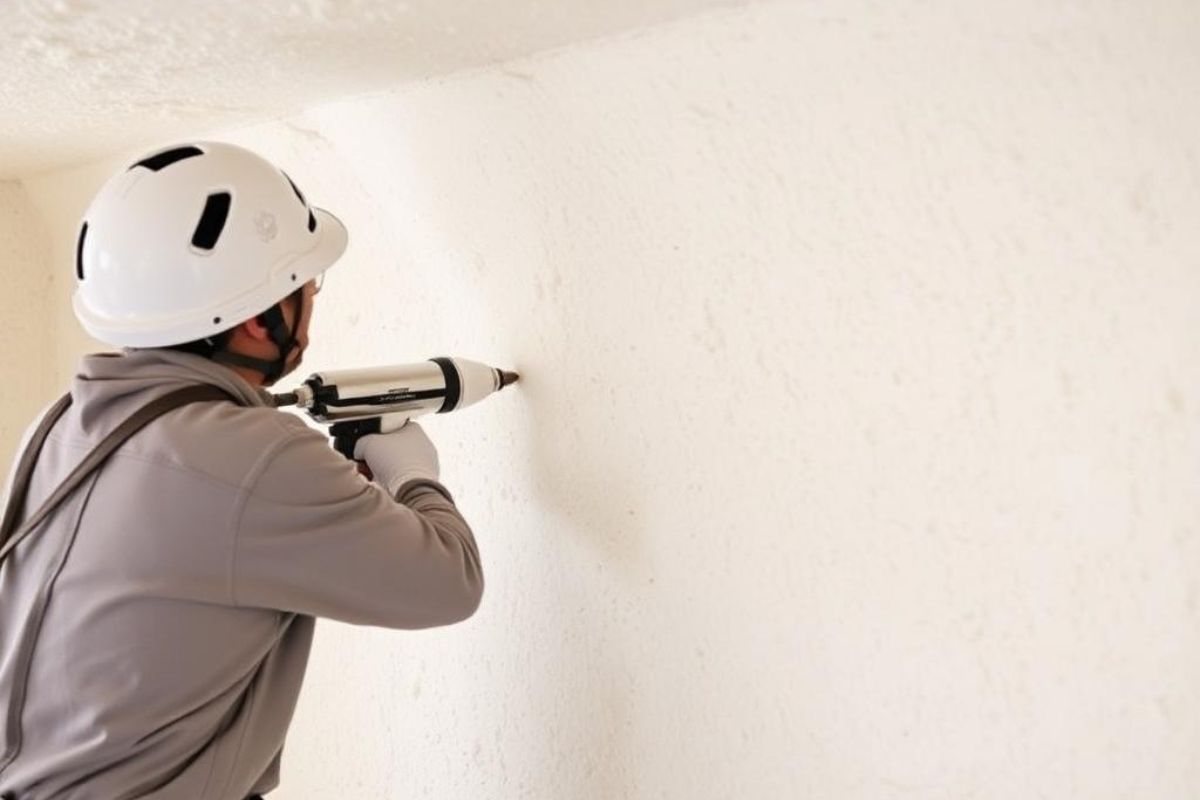Basic Hand Tools
In relation to tackling DIY projects or routine maintenance tasks, basic hand tools are the backbone of any toolkit. They provide us with the versatility and precision needed for a wide range of jobs. First on our list is the hammer, essential for driving nails and minor demolition tasks. A claw hammer, with its dual functionality, is a staple. Next, screwdrivers are indispensable. We should always have both flathead and Phillips types on hand for tightening or loosening screws.
Wrenches come in various sizes, and having an adjustable wrench is practical for gripping and turning nuts and bolts. Pliers, including needle-nose and slip-joint types, help us grip, twist, or cut wires and small materials. A tape measure guarantees accuracy when measuring materials, while a utility knife performs quick and precise cuts.
Fastening Equipment
Fastening equipment plays an essential role in holding our projects together, guaranteeing stability and durability. When we set out on any construction or DIY project, selecting the right fastening tools is vital. First, let's highlight screws and nails, which are staples in our toolkit. They come in various sizes and materials, suited to different tasks. Screws provide a strong hold and are easily removable, making them ideal for projects that might require adjustments. In contrast, nails are preferred for quick, permanent fastening.
Next, bolts and nuts offer a robust solution for heavier tasks. They're often used in situations requiring significant load-bearing capacity. We must verify the correct size and type to match the materials we're working with. Meanwhile, rivets are perfect for joining sheet metal or plastic, providing a tamper-proof connection.
Let's not forget about adhesives, which serve as versatile fastening options. Epoxies, super glues, and construction adhesives can bond a variety of materials without the need for holes or hardware. Ultimately, staples and brads cater to lighter tasks, such as upholstery or trim work. By choosing the right fastening equipment, we guarantee our projects are both secure and lasting.

Measuring Instruments
When tackling any project, precise measurements are vital to success. Without accurate measuring instruments, our projects may end up with misaligned parts or wasted materials. Understanding and choosing the right tools can make all the difference.
First, let's talk about the tape measure. It's a staple in any toolbox, offering flexibility with its retractable metal tape, ideal for measuring length and width over various surfaces. For detailed work, a ruler or a straight edge provides precision, especially in smaller dimensions. We should always have both on hand.
Next, consider the caliper, perfect for measuring thickness or diameter with remarkable accuracy. Whether digital or traditional, calipers offer precise readings that are necessary for tight-fitting components.
A level is another indispensable tool. It guarantees surfaces are true and even, using either a bubble or laser to help us achieve perfect alignment. The right angle is essential, and a square helps us verify 90-degree angles in our projects.
Power Tools Essentials
While basic hand tools provide the foundation for any toolkit, power tools improve our capability to tackle more complex and demanding tasks with efficiency and speed. Let's explore some essential power tools that can greatly elevate our productivity in various projects.
First up, the cordless drill. It's versatile, allowing us to drill holes and drive screws effortlessly. With adjustable torque settings, we can handle everything from light tasks to heavy-duty projects. Next, consider the circular saw. Its ability to make straight cuts in wood, metal, and even plastic makes it indispensable for construction and carpentry work. For even greater precision and versatility, check out a track saw kit for circular saw, which turns your tool into a guided cutting system for flawless, straight lines every time.
For sanding tasks, an orbital sander saves us time and guarantees a smooth finish. It's perfect for preparing surfaces for painting or refinishing furniture. A jigsaw adds precision when cutting curves and intricate shapes, making it ideal for woodworking and DIY projects.
Don't overlook the angle grinder. Its versatility in cutting, grinding, and polishing materials like metal and stone makes it a must-have for more specialized tasks. Finally, a power screwdriver streamlines assembly tasks, reducing effort and increasing our speed.

Cutting and Shaping Tools
Let's plunge into cutting and shaping tools, essential for transforming raw materials into finished pieces. These tools help us achieve precision and creativity in our projects. First, saws are indispensable. We can choose from hand saws for simple cuts or power saws like circular and jigsaws for more demanding tasks. Each saw has its unique purpose, from cutting wood to slicing through metal.
Next, chisels and planes allow us to shape materials with fine detail. Chisels are perfect for carving intricate patterns, while planes smooth wood surfaces, ensuring an even finish. A quality set of chisels and a sharp plane can make all the difference in our craftsmanship.
For more intricate shaping, files and rasps come into play. These tools enable us to refine edges and surfaces with precision. They're especially useful when working with metal or wood that requires detailed adjustments.
Essential Safety Gear
Before diving into any construction or DIY project, it's essential we prioritize safety by equipping ourselves with necessary safety gear. Proper protection means we can focus on creating without fearing injuries. Let's break down the basics.
First, never underestimate the significance of a hard hat. It shields us from falling objects, a common risk on job sites. Next, safety glasses protect our eyes from debris and splashes. For noisy environments, ear protection like earmuffs or plugs is key to prevent hearing loss.

Gloves are another must-have. Depending on the task, we might need cut-resistant, chemical-resistant, or heat-resistant gloves. They provide the grip and protection our hands need. Respirators or masks are important when working with dust or fumes, ensuring we don't inhale harmful particles.
Sturdy footwear, such as steel-toed boots, is significant for protecting our feet from heavy impacts and sharp objects. For high places, a safety restraint offers security and peace of mind. Finally, reflective clothing improves visibility, especially in low-light conditions.
Quality Building Materials
The cornerstone of any successful project is selecting quality building materials. When we choose materials that are durable and reliable, we set the foundation for a lasting structure. First, let's consider wood. Opting for treated lumber can prevent rot and insect damage, ensuring longevity. For concrete, a mix with the right proportion of cement, sand, and gravel guarantees strength. Steel, known for its tensile strength, is perfect for reinforcing structures.
We should also focus on insulation, as it plays an essential role in energy efficiency. High-quality materials, like fiberglass or foam board, can keep our buildings warm in winter and cool in summer. For roofing, durable options like metal or asphalt shingles provide excellent weather resistance.
Let's not forget the importance of eco-friendly materials. Recycled steel, bamboo, and reclaimed wood not only reduce environmental impact but often bring unique aesthetic qualities to a project.
Conclusion
In wrapping up, we've explored the critical tools and materials that form the backbone of any successful construction or DIY project. From basic hand tools and power tools to precise measuring instruments and effective cutting tools, each plays a crucial role. Fastening equipment guarantees stability, while quality building materials assure durability. Let's not forget essential safety gear, which protects us throughout our work. With the right preparation, we're well-equipped to tackle any project efficiently and safely.






Share: